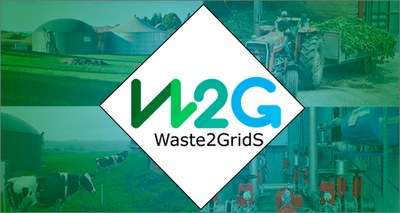Innovation: ENEA in EU project to produce energy from waste with fuel cells
4/3/2021
 ENEA, together with Ecole Polytechnique Fédérale de Lausanne (EPFL), Technical University of Denmark and Solidpower industrial group, has developed an innovative process to produce electricity from organic waste as part of the European project Waste2GridS - W2G, Waste for Networks (electricity and gas). The core of the process is the technology rSOC (Reversible Solid Oxide Fuel Cells) which, in addition to generating electricity from waste, employs excess electricity from wind and photovoltaic sources to produce gaseous fuel to be used in transport or injected into the natural gas distribution network.
ENEA, together with Ecole Polytechnique Fédérale de Lausanne (EPFL), Technical University of Denmark and Solidpower industrial group, has developed an innovative process to produce electricity from organic waste as part of the European project Waste2GridS - W2G, Waste for Networks (electricity and gas). The core of the process is the technology rSOC (Reversible Solid Oxide Fuel Cells) which, in addition to generating electricity from waste, employs excess electricity from wind and photovoltaic sources to produce gaseous fuel to be used in transport or injected into the natural gas distribution network.
"This solution allows to turn organic waste and residues management into an opportunity and utilize the excess power produced that would otherwise be lost" explained Alessandro Agostini and Claudio Carbone, the researchers at the ENEA Laboratory “Energy Storage and Hydrogen Technologies” who collaborated on the project. "Given a context of increasing penetration of non-programmable renewable sources, the rSOC technology allows to optimize the use of excess power and improve management and stability of the electrical system, favoring the integration of the electrical grid and the gas network".
As part of the project W2G, the ENEA team conducted a study to evaluate Italy’s potential acceptance of this technology, focusing on four key regions of southern Italy -Molise, Puglia, Basilicata and Calabria- which form the electricity market area defined as SOUTH, where an increase in non-programmable renewable energy is estimated by 2030.
"Currently, the excess electricity generated by these regions is delivered to the rest of Italy, but - Alessandro Agostini and Claudio Carbone said - the progressive penetration of wind and photovoltaic energy into the national energy mix will make it increasingly difficult to manage the energy surplus, with the risk of slowing down the spread and exploitation of renewable sources. The innovative rSOC systems would make it possible to use the exceeding production and, jointly with the exploitation of organic waste, produce biomethane ”.
This technology would also favor the achievement of the EU objectives in terms of renewable energy production (32% of the energy mix, established in the PNIEC - Integrated National Energy and Climate Plan- with 55% of renewable share in the electric sector by 2030) and those contained in the Waste Directive, which sets the target of 60% of municipal waste to be prepared for reuse or energy enhancement if no longer recyclable, by the same date.
On this issue, researchers at the ENEA Department of Energy Technologies and Renewable Sources (TERIN) published in Frontiers in Energy Research the article: “Potential deployment of reversible solid-oxide cell systems to valorise organic waste, balance the power grid and produce renewable methane: a case study in the Southern Italian Peninsula”.
